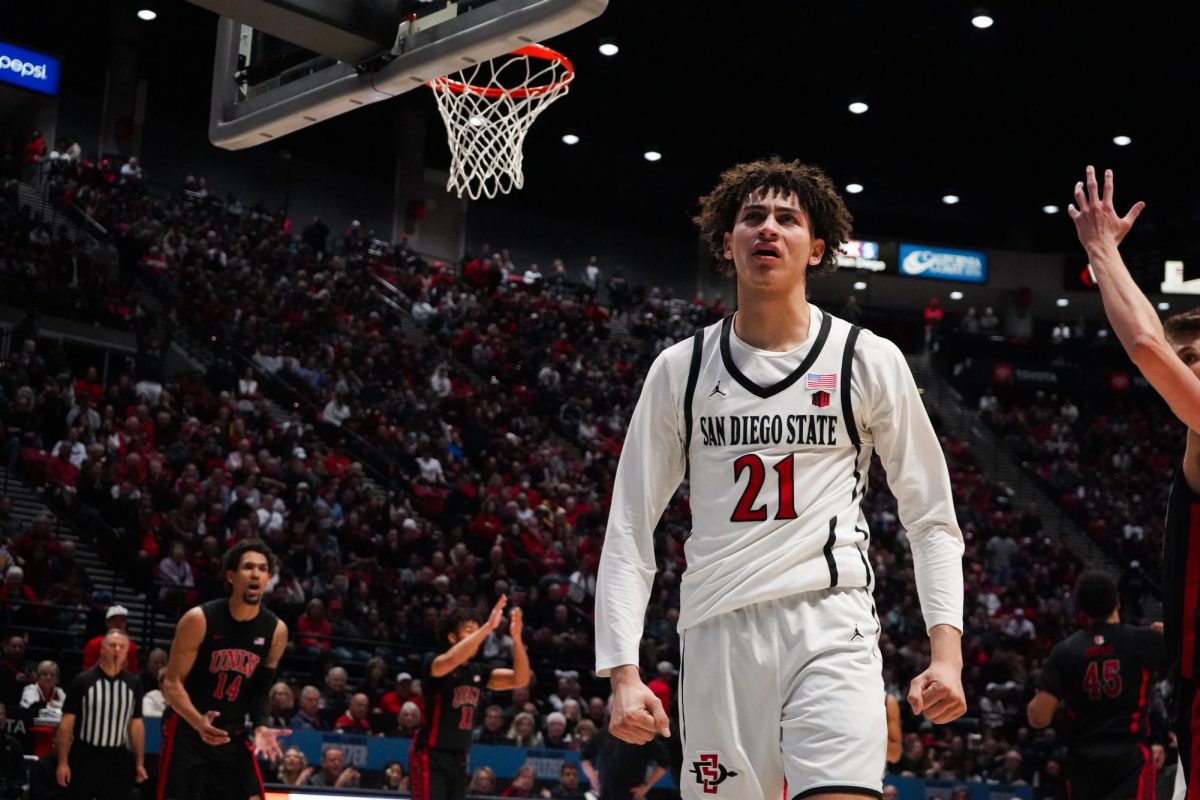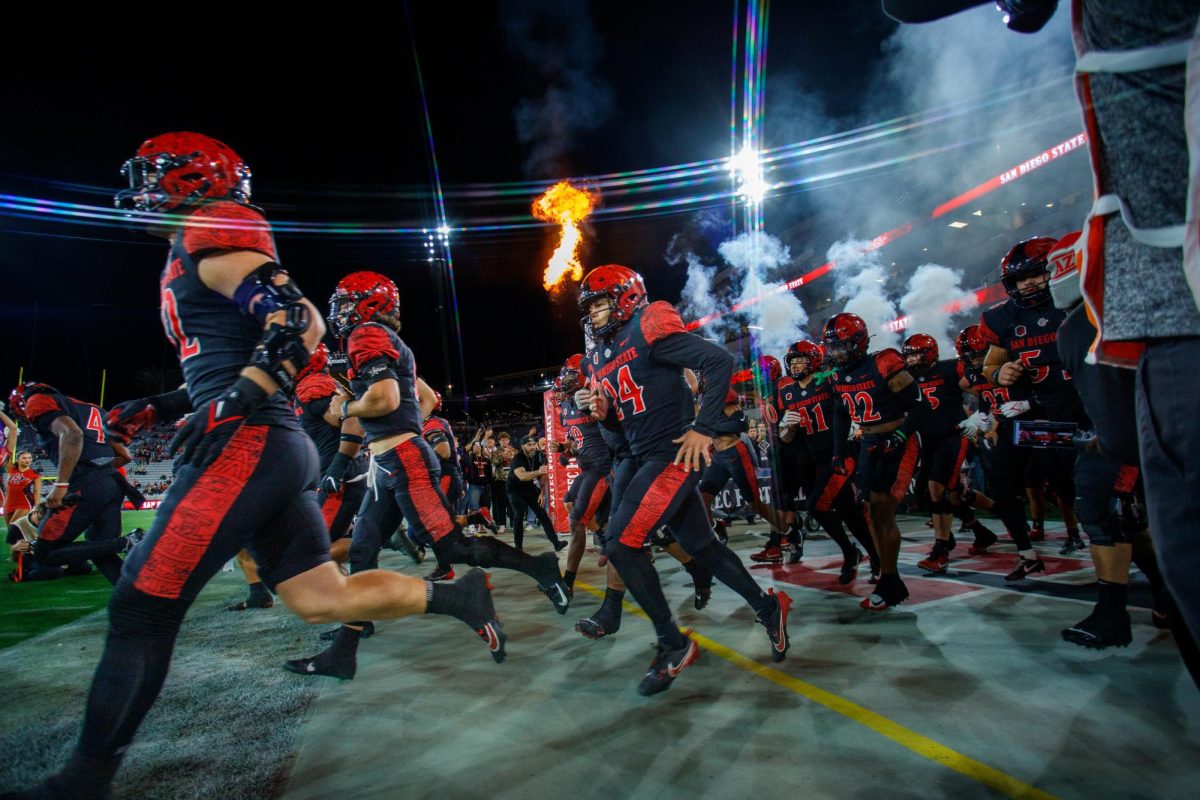According to The Guardian, 940 people have died at the hands of police in the U.S. in 2015.
Of those 940 victims, 228 were black — roughly 25 percent, which is higher than any other racial minority in the U.S.
This is why we need Black Lives Matter, especially at a predominantly white campus like San Diego State.
“When it comes to diversity, obviously SDSU could do better,” said Najja Wilson, member of SDSU’s African Student Union. “I think the lack of diversity and activism on campus often makes black students feel less accepted because other ethnic groups do not understand things that matter to us, such as the Black Lives Matter movement.”
All too often, victims of this racial violence simply become another hashtag on social media and nothing really happens or changes.
And with each Tweet, each protest and each death, there seem to always be some people who counter the proclamation of “Black Lives Matter” with “All Lives Matter.”
“I have heard it many times just from wearing my Black Lives Matter pin,” freshman Chidera Ezeani said. “White people on campus ask me, ‘Well, why doesn’t my life matter too?’ They constantly miss the point and it is frustrating. I definitely feel like we need to work on changing the atmosphere on campus so everyone sees the struggles of one ethnic group as a collective struggle.”
What many fail to realize is that Black Lives Matter doesn’t suggest any race’s life matters less.
Rather it serves to uplift and advocate for equality for a community that is disproportionately impacted by racial discrimination and police brutality.
“All lives do matter,” senior Juwan Armstrong said. “However, we are focused on the black ones right now because historically our lives have not, and as of right now our lives still do not — we are under attack. As a young black man, there are statistics on how likely I am to go to jail or get killed by the police. … I think it is really disingenuous for (white people) to willfully ignore the plight we endure just to make themselves feel comfortable.”
Rather than attempting to be inclusive, All Lives Matter actually does the opposite — it serves as a demand to be included in the aftermath of someone else’s pain, a pain that their privilege makes them less likely to experience.
It is a resistance to acknowledge the flawed system that allows officers who kill black people to receive paid leave.
It also exemplifies the willful colorblindness that allows them to so carelessly reject the idea of the issue of race.
According to Center on Juvenile and Criminal Justice, on average, young blacks are 4.5 times more likely to be killed by police than other races in that age group.
And two writers from Washington Monthly found blacks are nearly three times more likely than whites to be subjected to investigatory stops.
It is clear the solution to combat the systematic racism and institutional oppression that allows such disparities to thrive is if every individual realizes the fight against inequality and police brutality is not just a “black problem,” but rather an American problem that every one — no matter color, age or gender — should work to combat.
At SDSU, where the black population was less than 5 percent last year (according to Forbes), there is less of a black voice, and as a result the Black Lives Matter movement struggles to carry the weight in needs to carry on campus.
This movement can only move forward with help from everyone at SDSU.
“As a white male, I am the problem,” freshman Riley Linehan said. “When I say that I’m not suggesting that it is my fault, but I am saying that the system embedded in society today thrives because of white supremacy, and it is up to white people to help dismantle this system.”
The All Lives Matter counter did not exist as a separate movement. It arose completely as a retort to Black Lives Matter.
What white people must ask themselves is, “Have I ever been followed in a department store? Stopped by the police for no absolute reason? Denied opportunities due to the color of my skin?”
Ultimately, white people must begin to take the experiences of black people seriously and listen to what they are saying.
To deny the truth of these experiences because it’s uncomfortable is equivalent to placing comfort above the lives of others.
Put simply, when a white person responds to “Black Lives Matter” with “All Lives Matter” it is pointless.
We know white lives matter.
Society and history has not shown us otherwise.
“Black Lives Matter” is a statement of outrage and demand for equality, and the right to live without scrutiny.
It’s also a chant that connects the history of slavery to the notion that a black life was seen as no more than three-fifths of a white life.
It’s a statement that opposes Jim Crow laws, a prison system geared toward the degradation of black lives and a police system that seems to so easily take the lives of black people without sufficient reasoning.
The statement “Black Lives Matter” implies that all lives matter, even and including black ones — a phrase that would not be said if it did not have to be.
As students of a school with a very small population of black students, it is imperative we continue to remind black students through our actions and statements that their lives matter, too.









